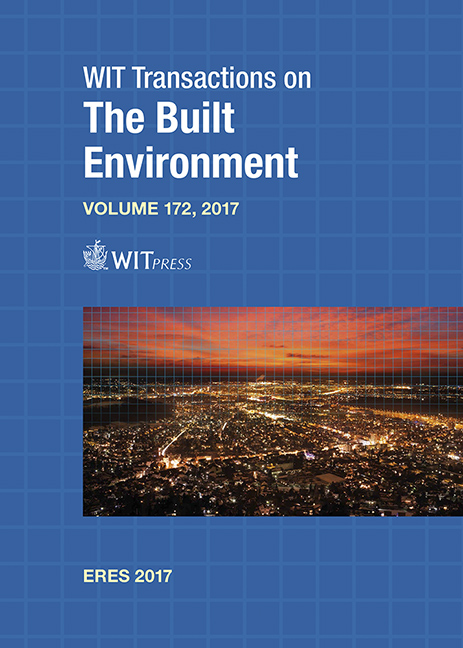METHODOLOGY FOR THE DYNAMIC ANALYSIS OF BUILDINGS SUBJECTED TO SEISMIC ACTIONS: INCORPORATING THE EFFECT OF NON-STRUCTURAL ELEMENTS
Price
Free (open access)
Transaction
Volume
172
Pages
11
Page Range
15 - 25
Published
2017
Size
697 kb
Paper DOI
10.2495/ERES170021
Copyright
WIT Press
Author(s)
MA CARMEN GARCÍA PASTOR, AMAYA GÓMEZ YÁBAR
Abstract
It is common practice to consider the enclosures and partitions of buildings as ‘non-structural’ elements and, consequently, neglect the rigidity and resistance they provide in the analysis of the structure against gravitational loads. However, this simplification is not always on the safe side when it comes to analysing the behaviour of the structure against horizontal earthquake loads. When a partition has not been isolated from the concrete frame surrounding it, both systems interact in the presence of seismic action. This effect increases the lateral stiffness of the frame and can cause various problems such as torsion in the building, soft-storey effect or an increase in the seismic forces. The vast majority of seismic standards establish that it is necessary to consider the influence of non-structural construction elements that can develop sufficient rigidity and resistance to modify the conditions of the structure, and that they must be taken into account when generating the structural analysis model. For this reason, CYPE Ingenieros S.A., in collaboration with the International Centre for Numerical Methods in Engineering (CIMNE), has developed a software tool that incorporates a model and a calculation methodology that allows us to consider the effects of the ‘frame-masonry wall’ interaction in seismic situations, in a more realistic way, and also, retain reasonable calculation duration times. Finally, presented below are the results from having applied the software tool to several calculation examples, which show the conclusions that have been obtained, and justify its contribution in terms of safety against seismic action.
Keywords
seismic, building, partitions, interaction, structure, level of damage





